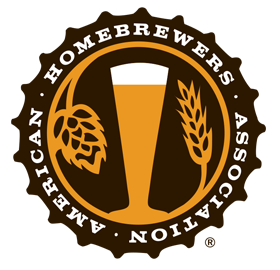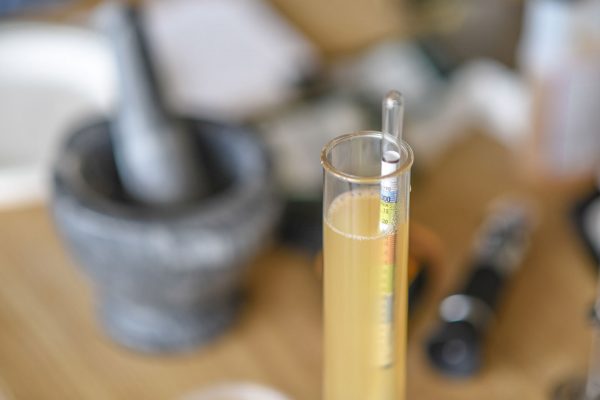SafBrew™ BR-8: bring “funky notes” to your beer with the first dry Brett for your bottle and cask conditioning!
By Hugo Picard, Technical Sales Manager Home segment at Fermentis
The wild yeast Brettanomyces has made a comeback in the global beer industry in recent years. In response to its newfound popularity, Fermentis offers the first Brett in a dry, micro granular format. SafBrew™ BR-8 offers brewers and homebrewers all the flavorful benefits of the “wild” yeast Brettanomyces but with more control and reliability. Selected specifically for secondary fermentation in bottles and casks, SafBrew BR-8 is characterized by the production of phenolic compounds, such as 4-Ethylguaiacol and 4-Ethylphenol, responsible for many of the funkier flavor descriptors like horse blanket, leather, and barnyard aromatics at the end of fermentation.
SafBrew BR-8 assimilates mono-, di-, and tri-saccharides (glucose, maltose, maltotriose) but not all sugars, like some wild Brett. It offers more control compared to a wild Brett and greater reliability for the user, as there is no risk of over-saturation or gushing after bottling. Its significant consumption of sugars will allow fewer residual sugars and, thus, better drinkability.
Brettanomyces is a slowly fermenting microorganism, so the beer requires a period of maturation. The development of the desired flavors evolves. There is no “perfect” period of maturation. It all depends on what you’re looking for in terms of aromatic profile for your beer. That being said, a minimum period of maturation of one month is recommended by Fermentis to really observe a “Brett footprint” on your beer. Allowing your beer to maturate for more extended periods lets its aromatic profile evolve; three months, six months, and beyond. To orient your choice for the duration of your maturation period, you can consider as a general rule that the more you wait, the stronger the “funky notes” will be. You can observe this aromatic profile evolution on the data provided by Fermentis here below.

What is the Odor Unit?
Odor detection threshold is the lowest odorant concentration necessary for detection by a certain percentage of the population, normally 50%. This concentration is defined as 1 odor unit.

On the left, from an analytical perspective, we can see that the beer refermented with SafBrew BR-8 shows a concentration in 4-EP and 4-EG (the aromatic compounds responsible for the funky notes) after 1 and 3 months.
On the right, from a sensory analysis perspective, we see that 77% of the panelists who have tasted the beer after one month of maturation can detect the Brett footprint. This number climbs to 95% after three months of maturation, a sign that the longer the beer maturates, the stronger the Brett footprint will be.
How to use the SafBrew™ BR-8 during your brewing session?
Most Fermentis products are certified E2U™ (Easy-To-Use). When it comes to yeast, E2U certification means you can choose to pitch directly into the wort or proceed to rehydration. It makes no difference, and it’s up to you. Fermentis guarantees you exactly the same results. The scientific study behind the certification is explained here.
Because SafBrew BR-8 is specially selected for secondary fermentation, this yeast’s story is a bit different. Being added after primary fermentation means the yeast is introduced to a high level of alcohol. This alcohol could be problematic for the healthy development of the yeast. Fermentis recommends rehydrating the yeast before pitching it, specifically for the SafBrew BR-8. You’ll find below how to proceed the best way with this product.
Note that to use the SafBrew BR-8 for your secondary fermentation, you must perform your primary fermentation with a maltotriose-positive yeast (yeast strain able to assimilate the maltotriose); otherwise, the level of the residual amount of maltotriose would be too high at the end of the primary fermentation.
Rehydration:
- Sprinkle the yeast in a minimum of 10 times its weight of sterile water at a temperature of 77°F to 84.2°F. Note that the dosage recommendation for the SafBrew BR-8 is 5 to 10 g/hL of beer produced.
- Leave to rest for 15-30 minutes.
- Gently stir until obtaining a yeast cream before pitching in beer.
Bottle fermentation:
- Add 5-10 g/L of sugars to obtain an additional saturation of 2.5-5.0 g/L of CO2.
- Add the yeast cream previously prepared to your sweetened beer.
- Bottle and let your beer maturate for at least one month at an optimal fermentation temperature of 59-77°F.
- At the end of refermentation, the beer can be cooled down and will gain in roundness after 2 to 3 weeks.
In conclusion, SafBrew BR-8 gives brewers and homebrewers a reliable tool for attaining a slightly funky, specific phenolic character to their beers, as well as beers that are drier, more highly attenuated, fruitier, lighter in body, and slightly funkier as they age. We hope that homebrewers will explore traditional European styles such as Red Flanders Ale or Lambic with this yeast, and we also hope that, with their characteristic creativity, homebrewers will explore new horizons. It’s one of the objectives behind this very innovative product!
Technical Sales Manager for the home segment at Fermentis, Hugo is in charge of supporting homebrewers, winemakers, and cidermakers in their hobby for beverage production at home. Hugo graduated with a Master’s in Science and Agricultural Engineering from ISA Lille in France. He also acquired a Master’s in International Marketing and Communication at Lille University. Before joining Fermentis, he was president of a brewing association, worked in several breweries and brewpubs in France, and as a brewer nd marketing/communication associate in New Zealand.






Share Post